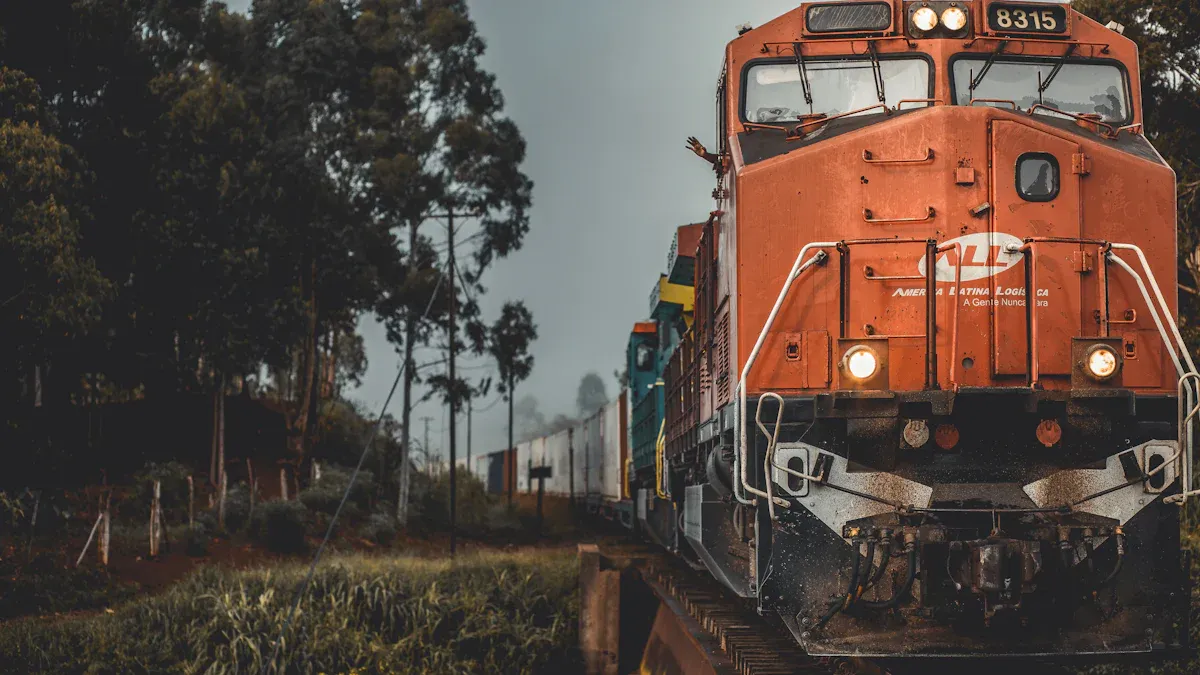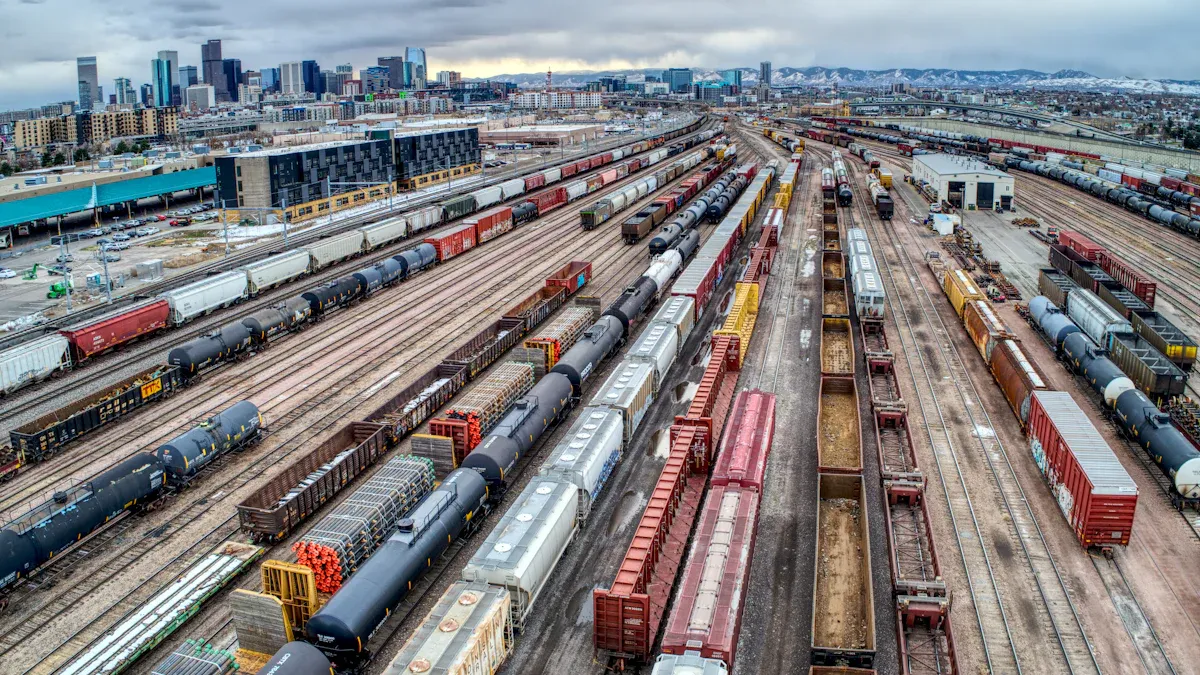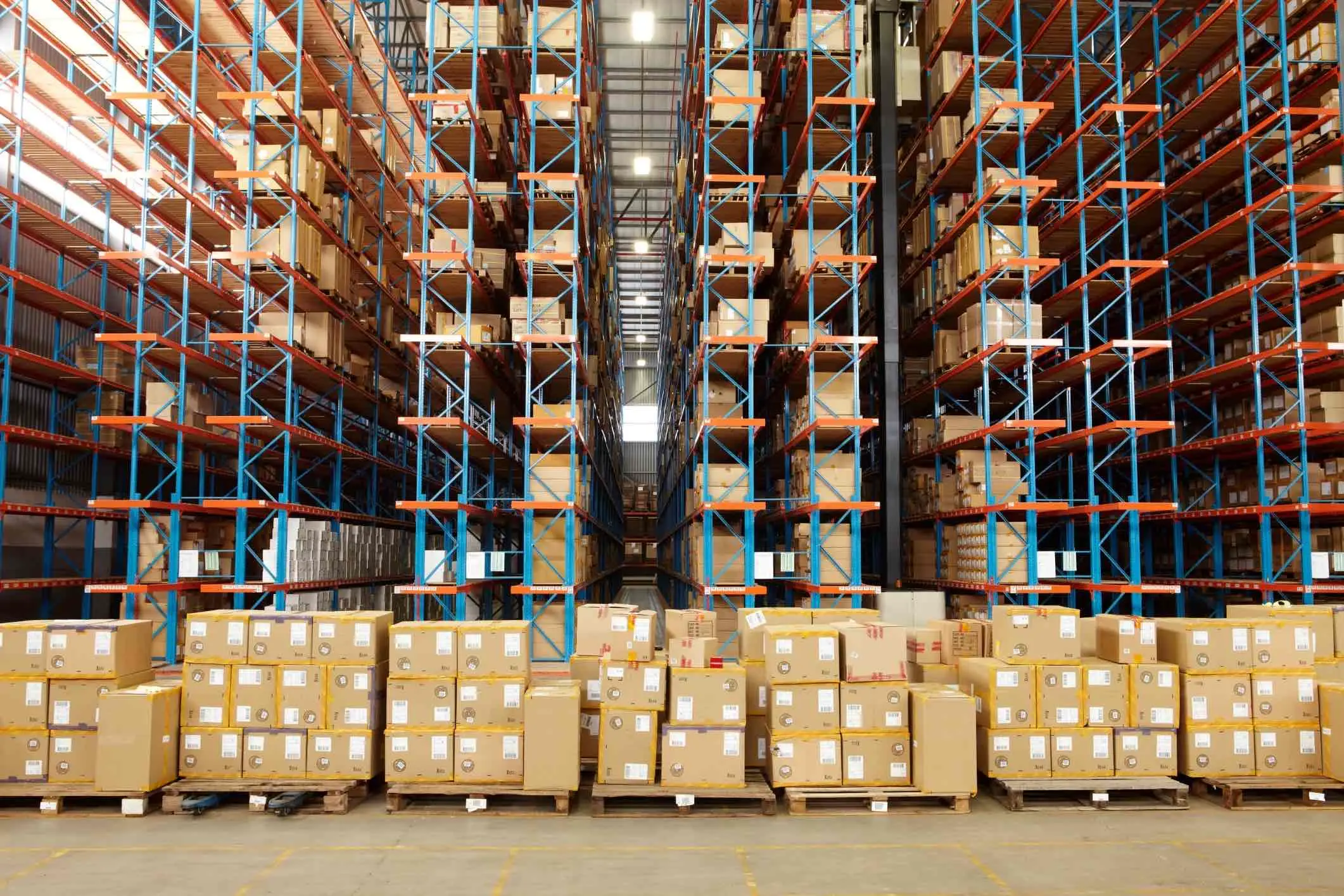Understanding Rail Logistics and Its Impact on Modern Supply Chains

Rail logistics is very important in today's supply chains. It helps move goods over long distances in a smart way. Trains are cheaper for moving large amounts of goods than trucks or planes. Rail transport is also better for the environment. It creates less pollution and needs fewer trips.
Rail logistics is a cheap way to move big goods far.
Trains make less pollution per ton than trucks or planes.
Rail logistics can carry more goods than trucks, making it better for big loads.
The global rail logistics market was worth $416.8 billion in 2024. It is expected to grow by 5.4% each year from 2025 to 2034. This shows how important it is for solving supply chain problems and helping the environment.
Key Takeaways
Rail transport is a cheap way to move big items far, saving companies money.
Trains are eco-friendly, causing just 0.5% of global pollution, making them a good green option for supply chains.
New rail technology helps track shipments and work faster, letting businesses handle deliveries well and keep customers happy.
What Is Rail Logistics and Its Role in Modern Supply Chains?
Defining Rail Logistics
Rail logistics means moving goods using trains in an organized way. It includes planning and managing transport to make it efficient. This system tracks shipments, plans better routes, and uses resources wisely. Rail logistics is a dependable and eco-friendly way to move goods far. It is less impacted by bad weather, making it safer for supply chains. Trains release only about 1% of the carbon dioxide that trucks do, showing their environmental advantages.
Key Parts of Rail Transport in Supply Chains
Modern rail transport uses technology to work better. Digital tools replace old systems, improving how things are managed. Real-time data helps track shipments and fix delays quickly. Important parts include:
Better Inventory Management: Updates stop stock from running out.
Improved Customer Service: Tracking keeps customers happy.
Safer Risk Management: Visibility lowers risks like damage or delays.
Automation and smart maintenance cut costs and boost reliability. These upgrades make rail transport a key part of today’s supply chains.
Industries That Use Rail Logistics
Many industries use rail logistics because it saves money and works well. For example:
Industry | How Rail Logistics Helps |
|---|---|
Agriculture | Moves large amounts of crops easily |
Mining | Carries raw materials efficiently |
Manufacturing | Ships cars and machines at lower costs |
Trains carry more than trucks, making them great for big loads. Fewer trips and less fuel make rail logistics greener. It is especially useful for heavy or oversized items, offering both flexibility and dependability.
Benefits of Rail Logistics for Supply Chain Efficiency

Saving Money and Working Better
Using trains to ship goods costs less for long trips. Trains can carry a lot at once, saving money. One rail car holds as much as four trucks. This lowers shipping costs and reduces storage needs.
Rail logistics also makes work easier. Fewer trips mean less handling and better warehouse use. Rail data helps you see costs, service quality, and performance. This helps you make smart choices for your supply chain.
Helping the Environment
Trains are one of the greenest ways to ship goods. They release fewer harmful gases than trucks, planes, or ships. Rail transport makes up just 0.5% of global greenhouse gas emissions. It uses less fuel, cutting CO2 and helping the planet.
Choosing trains helps your business stay eco-friendly and efficient. Rail logistics supports both the environment and your supply chain goals.
Better Tracking with Rail Technology
New rail technology makes tracking shipments easier. Computers plan train schedules and manage resources well. Systems like EDI share data quickly and reduce mistakes. Cloud tools give real-time updates to fix problems fast.
These tools let you track goods and avoid delays. Better tracking improves supply chains and keeps customers happy by sharing updates.
JUSDA’s China-Europe Express Rail: Changing the Game in Rail Logistics
Features and Benefits of the China-Europe Express Rail
The China-Europe Express Rail connects two big economic areas. It delivers goods faster than ships and costs less than planes. This makes it a smart choice for businesses wanting to save time and money. The rail system has different routes, like Western, Central, Eastern, and Southern paths. These routes improve trade and make moving goods easier.
Since 2011, the service has grown every year with more trains and cargo.
It works as a land bridge, cutting travel time and boosting trade.
Many industries use it because it is reliable and affordable.
These features make the China-Europe Express Rail important for modern rail shipping. It helps businesses improve their supply chains.
How JUSDA Helps Supply Chains with Rail Transport
JUSDA makes supply chains better with custom rail transport services. For example, JUSDA Europe runs a freight service twice a week. It connects Lovosice in the Czech Republic to Bato in Ukraine. This service strengthens trade in Central and Eastern Europe. It also offers flexible and fast transport, helping businesses handle changes easily.
JUSDA uses advanced rail systems to keep things running smoothly. These tools track shipments in real-time, reduce delays, and keep customers happy. JUSDA’s rail expertise helps businesses save money and work more efficiently.
Real-Life Success with JUSDA’s Rail Services
JUSDA’s China-Europe Express Rail has shown great results. It has moved many TEUs along its routes, even during tough times. Its strong performance proves it is dependable for global trade.
For example, JUSDA has helped companies in electronics and medical supplies improve their work. By using rail, they have cut delivery times and managed inventory better. These examples show how JUSDA’s rail services add value to today’s supply chains.
Overcoming Challenges in Rail Logistics
Fixing Infrastructure and Capacity Problems
Rail logistics has some big problems with infrastructure and space. For example:
Not enough data makes it hard to study railways.
Passenger trains often get priority over freight at borders.
High costs for railcars and terminals stop small businesses.
A report says better planning is needed for rail freight. More tracks and stations are required to meet future needs. Working together on international projects can also improve cross-border shipping. Solving these problems will make rail freight faster and better.
Mixing Rail with Other Transport Methods
Using rail with other transport types creates smart solutions. Intermodal transport combines trains, trucks, and ships to save money and time. This mix helps businesses adjust quickly to changes in the market.
Technology is very important here. Tools like live tracking and AI systems make switching from trucks to trains easier. By combining these methods, businesses can use resources better and keep customers happy.
Using Technology for Better Supply Chains
Technology has made rail logistics easier and clearer. Live tracking now shows where shipments are right away. AI predicts delays and improves how things run. For example, drones and smart tools help fix train tracks faster.
Cloud systems also make work smoother by giving real-time updates. Digital documents like e-bills reduce mistakes and save time. These tools make rail shipping more reliable and clear, helping businesses improve their supply chains.
The Future of Rail Logistics in Modern Supply Chains
New Ideas in Rail Tracking and Automation
Modern rail tracking is changing how supply chains work. Smart tools like AI and IoT are leading the way. AI studies data to predict delays and plan better train schedules. IoT helps track shipments by showing their location and condition live. These tools give full visibility, helping you make smart choices.
Automation is also making a big difference. Computer systems now manage train movements and use resources wisely. Cloud platforms solve problems early, making rail transport more reliable. New ideas like hydrogen trains and blockchain cut travel time and improve trust. These changes make rail shipping smarter and more useful for supply chains.
Growing Rail Networks for Global Trade
Rail networks are growing fast to meet rising transport needs. Projects like China’s Belt and Road and the UK’s HS2 are speeding up trade and cutting travel times. In Africa, the Lagos-Calabar Railway connects regions better. The U.S. is also spending $2.4 billion on new rail projects. These efforts improve global trade and create jobs.
Countries in Asia and Africa are building new railways to grow trade. Richer nations are upgrading old systems for safety and speed. For example, China spent $97 billion in 2024 to add 2,300 kilometers of new tracks. These projects show how rail helps connect markets and boost global trade.
Rail as a Green Choice for Supply Chains
Rail transport is key to eco-friendly supply chains. Trains release only 1% of the carbon dioxide that other transport does. They also use less fuel, cutting greenhouse gases to just 0.5% globally. This shows how good rail is for the planet.
Businesses now care more about being green. Using trains lowers pollution while staying efficient. Rail tracking systems also show fuel use and emissions clearly. As the world goes greener, rail will stay important for sustainable supply chains.

JUSDA Solutions
To provide you with professional solutions and quotations.
Rail logistics is very important for today’s supply chains. It offers cheaper, greener, and more reliable ways to move goods. It helps deliver items on time, lowers pollution, and moves large loads easily.
Benefit | Description |
|---|---|
Cost-Effectiveness | Moving big goods by train costs less than trucks or planes. |
Environmental Sustainability | Trains use less fuel and release fewer harmful gases, making them eco-friendly. |
Reliability and Consistency | Train schedules are steady and not affected by traffic or bad weather. |
Capacity for Bulk Transport | Trains carry more goods than trucks, perfect for heavy loads. |
Safety and Security | Railways are safer for dangerous goods, reducing accidents and theft. |
JUSDA is a top company in improving rail logistics. It has over 2,000 rail routes and 155+ centers worldwide. Its China-Europe Express Rail moves over 10,000 TEUs yearly, proving its success. Choosing JUSDA helps your supply chain work better and stay green.
🚆 Tip: Trains cause only 0.5% of global greenhouse gas emissions. Using hydrogen-powered trains can make them even cleaner!
